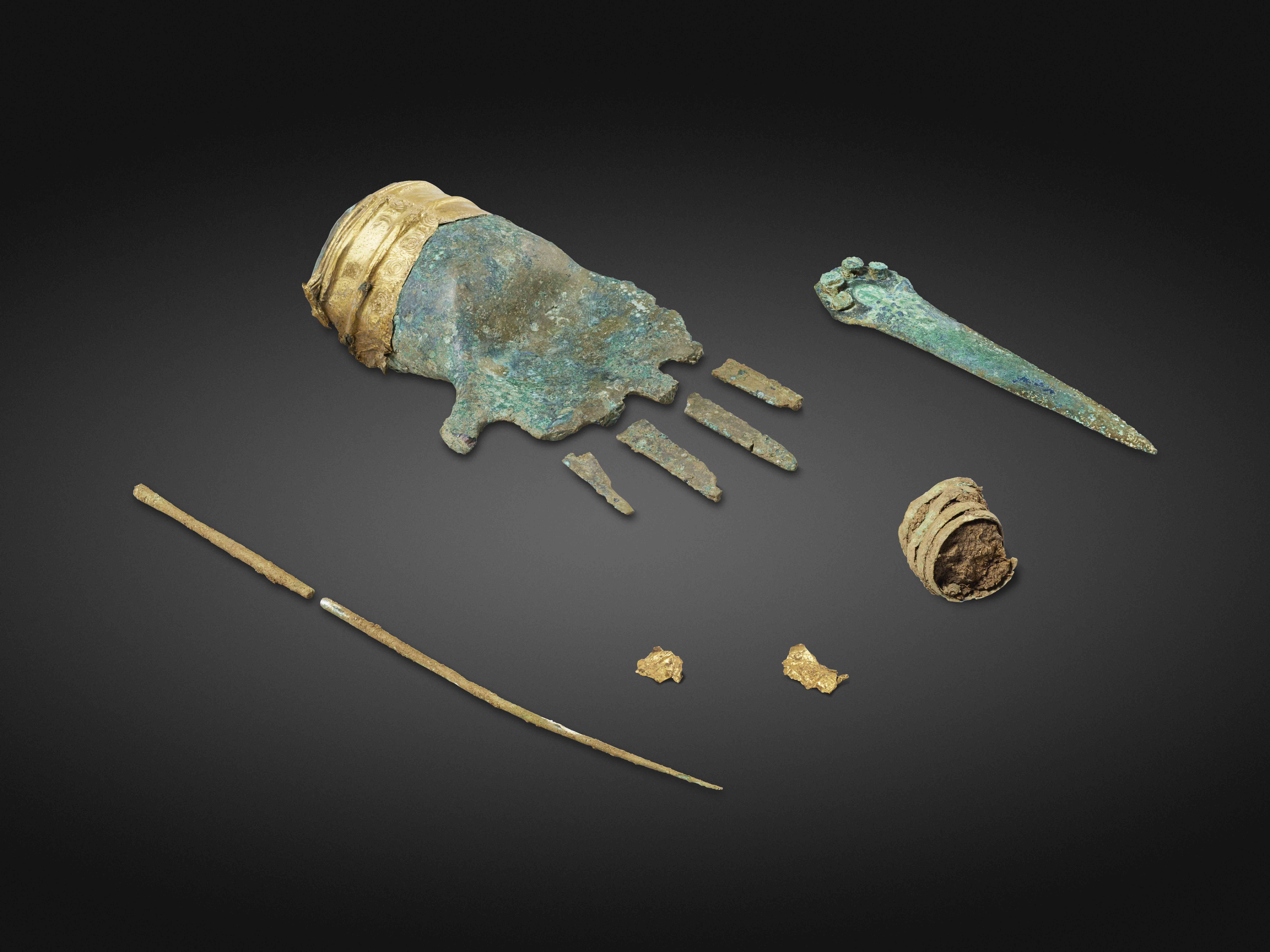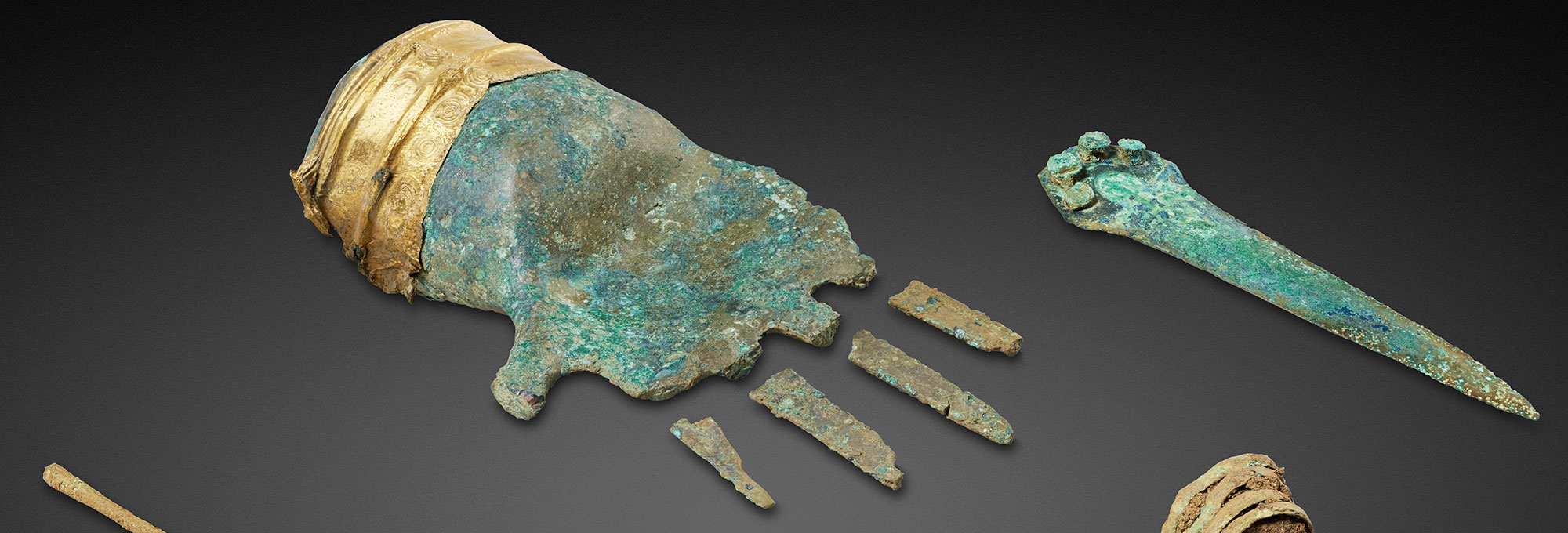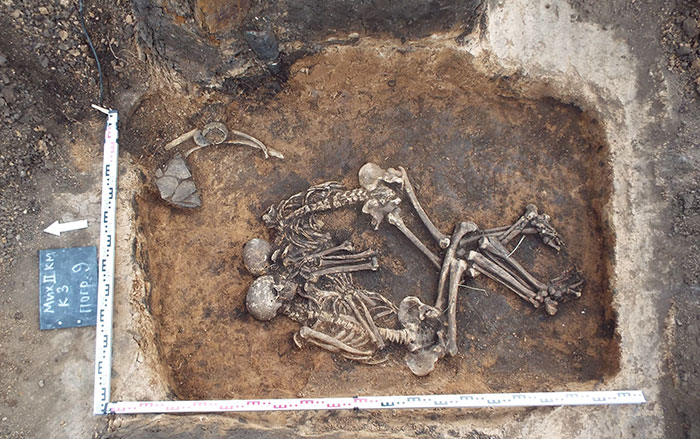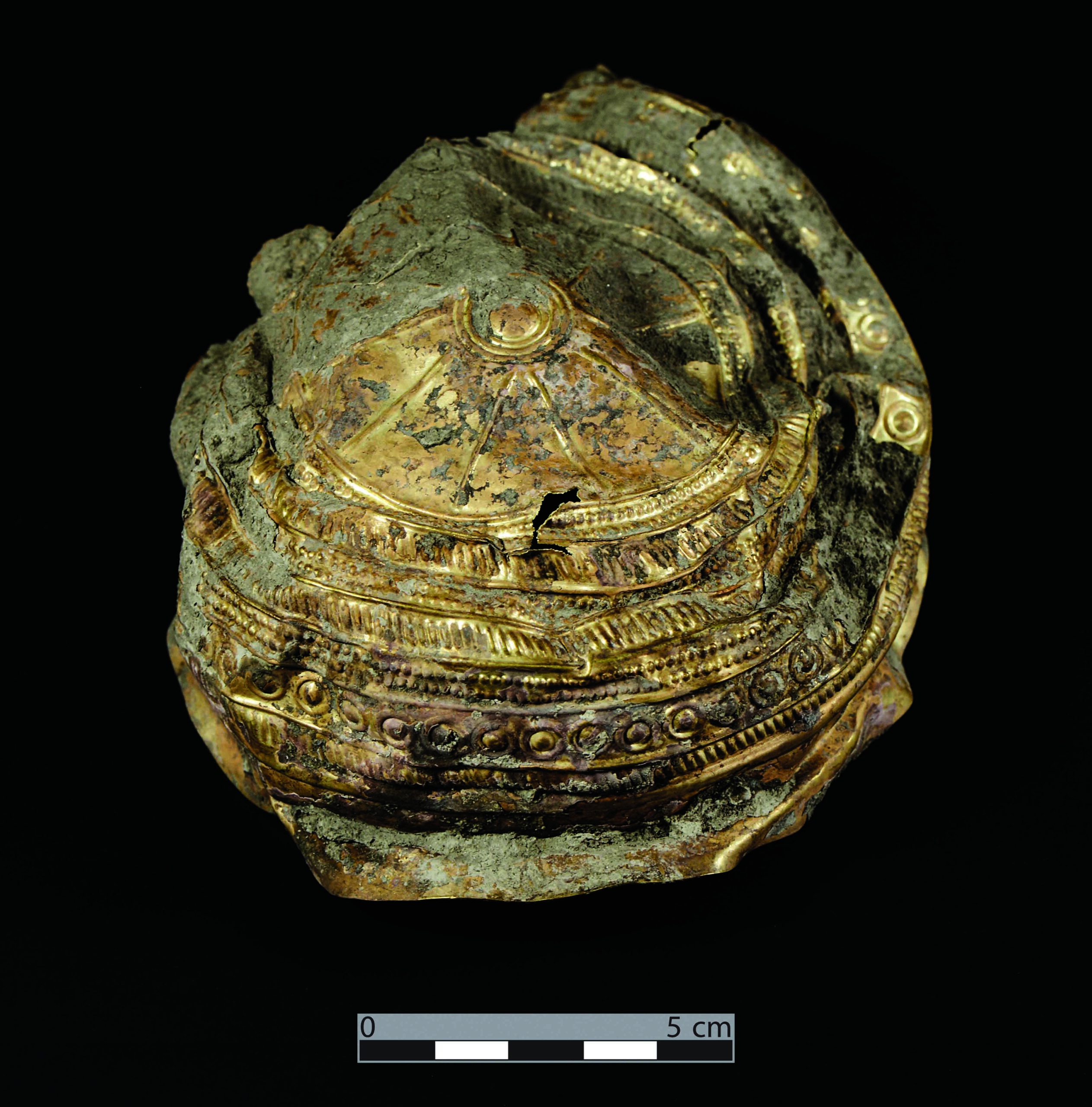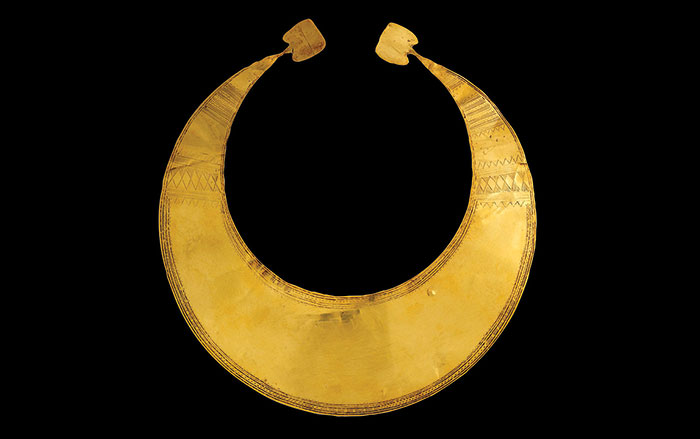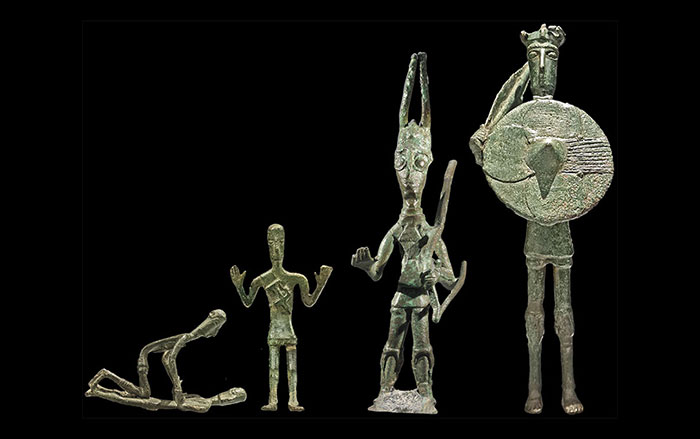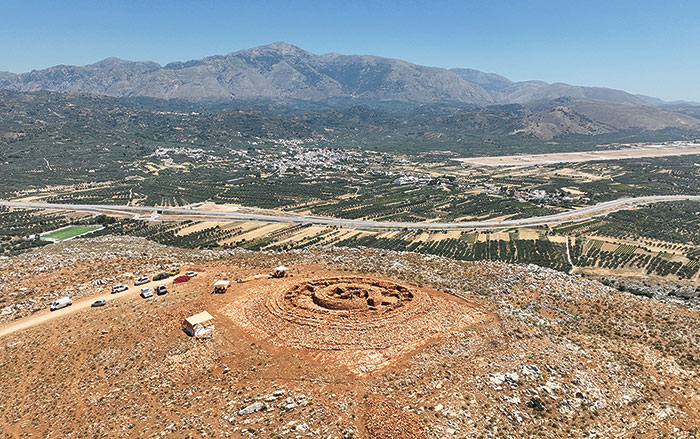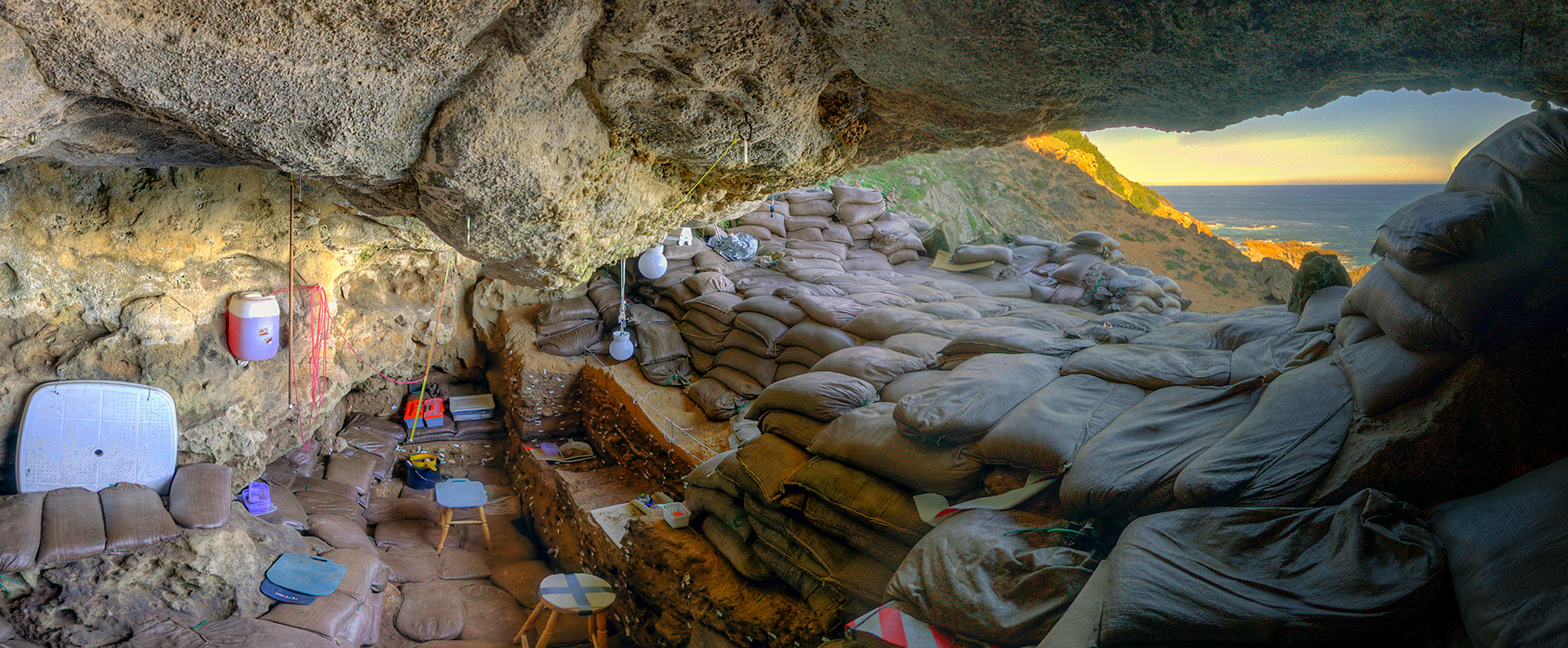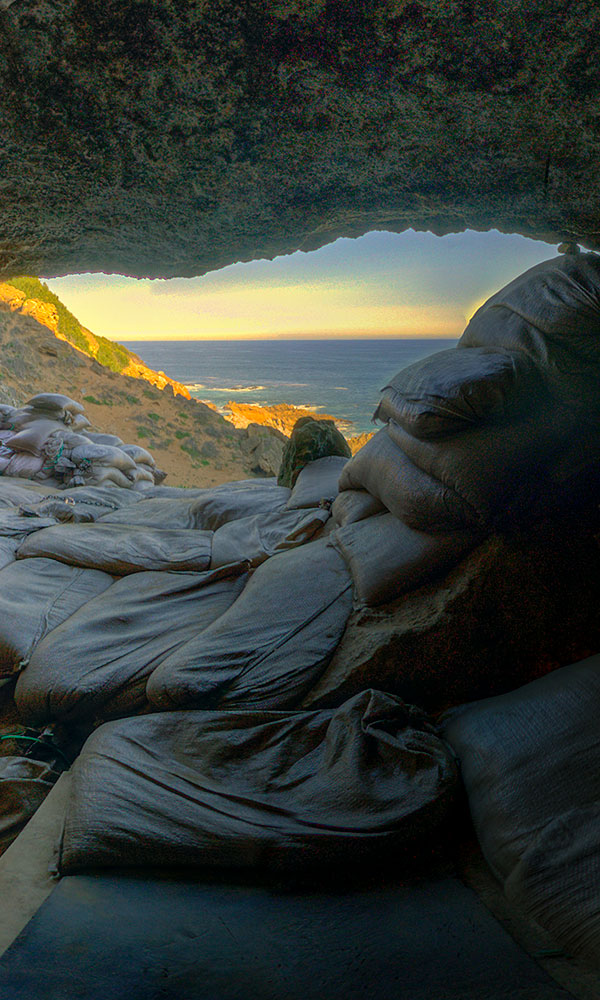Swiss archaeologists were baffled when they first saw the bronze hand wearing a gold foil bracelet. All the evidence—including radiocarbon dating of vegetable glue used to affix the gold foil and the style of a bronze dagger found along with the hand—suggests the unusual artifact was fashioned in the mid-second millennium B.C. But nothing like it is known from the period.
At the site where the hand was found—a spectacular plateau in the shadow of the Alps and the Jura Mountains—archaeologists unearthed a man’s skeleton, along with a missing finger from the bronze hand as well as a bronze pin and spiral and several gold flakes. The hand’s purpose is enigmatic. “It may have been this man’s insignia,” says Andrea Schaer of the Archaeological Service of the Canton of Bern, “and when he died it was buried with him.” She says the hand also may have served as a symbolic replacement for one perhaps lost by the man during his life, though it is too delicate to have been a practical prosthetic.
